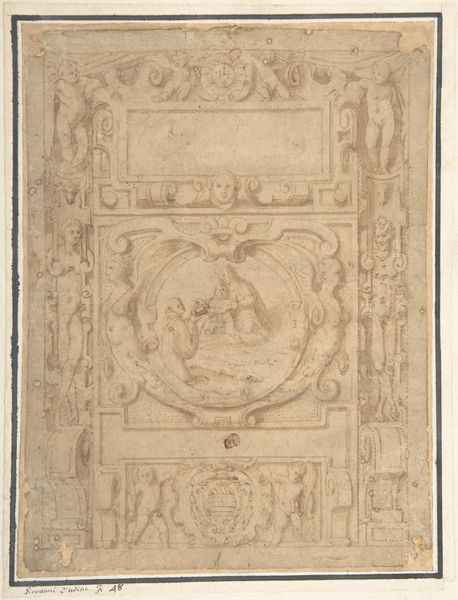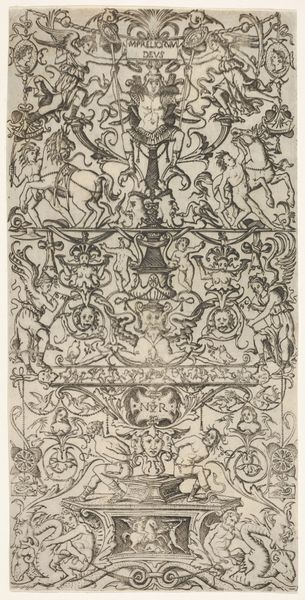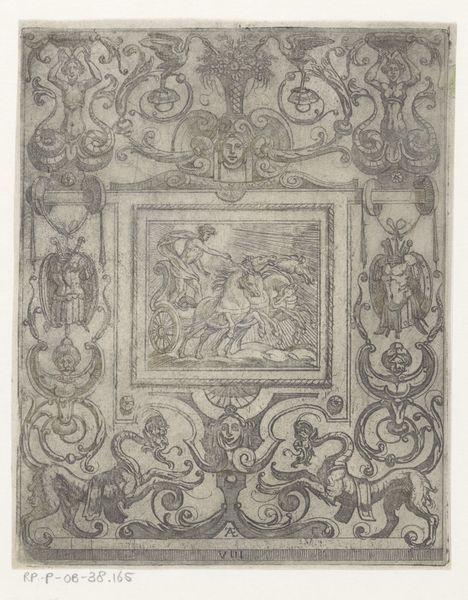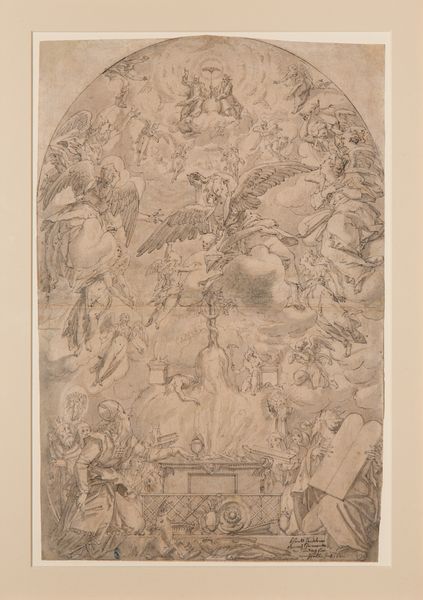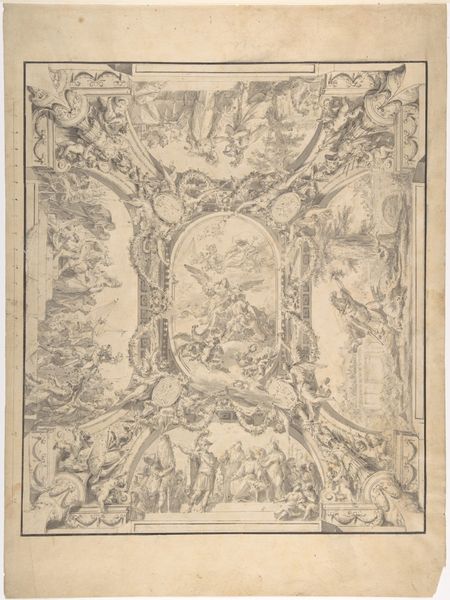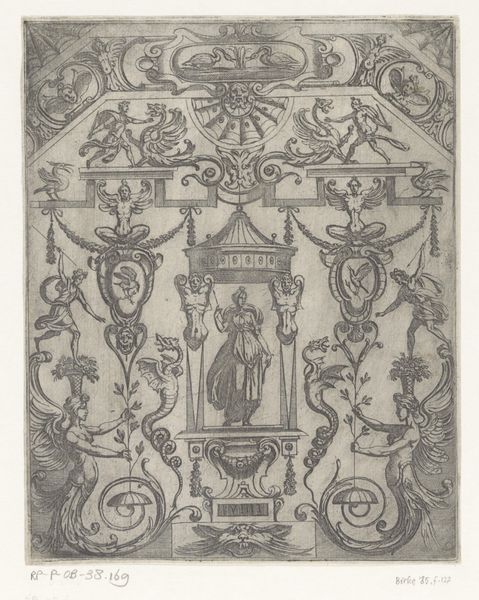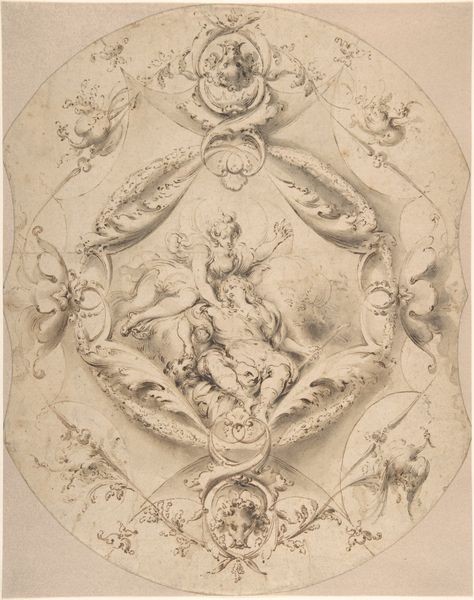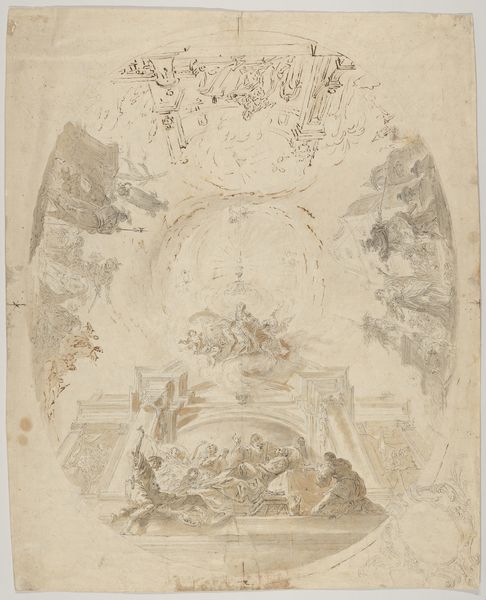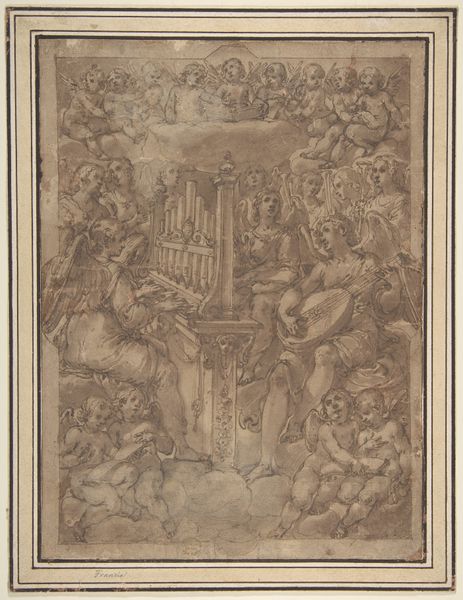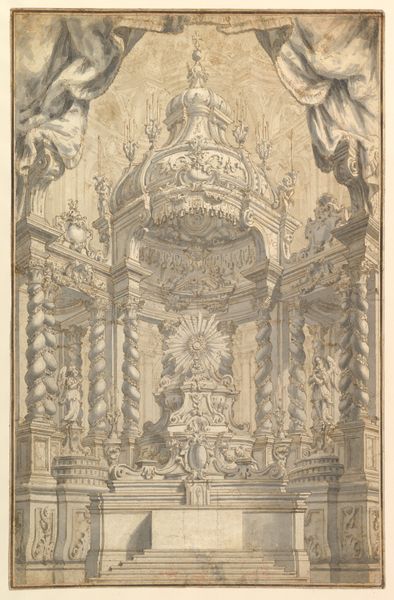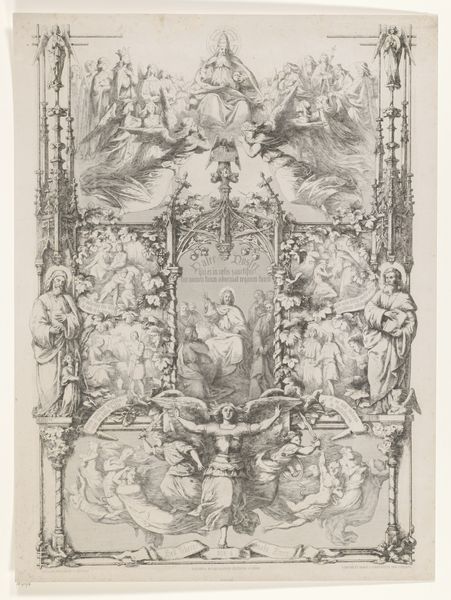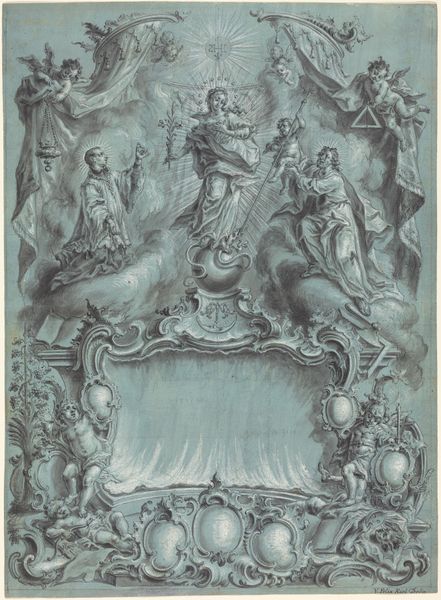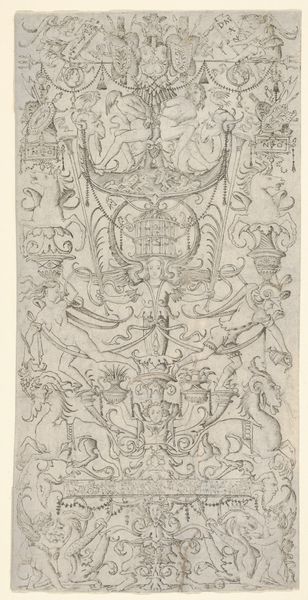
The Adoration of the Holy Trinity in the New Covenant 1588
0:00
0:00
drawing, print, paper, ink, pen
#
drawing
#
allegory
#
ink painting
# print
#
pen sketch
#
paper
#
11_renaissance
#
ink
#
pen
#
history-painting
Dimensions: sheet: 14 3/4 x 9 9/16 in. (37.5 x 24.3 cm)
Copyright: Public Domain
Curator: This drawing, made around 1588 by Friedrich Sustris, is entitled "The Adoration of the Holy Trinity in the New Covenant". It's an ink and pen sketch on paper, currently residing at the Metropolitan Museum of Art. Editor: My first impression is… overwhelming. It's like looking into a crowded dream, all swirling clouds and figures emerging from the mist. Kind of intimidating, honestly. Curator: That sense of being overwhelmed is understandable. Allegorical depictions of the Trinity, especially during the Renaissance, often relied on a dense visual vocabulary. Symbols representing different aspects of faith intertwine, forming a complex tapestry that encourages deep contemplation on the divine mystery. Editor: So, not just a pretty picture, then. More like a visual puzzle designed to make your head spin with religious concepts? Is the artist deliberately using symbols to communicate specific theological ideas? Curator: Absolutely. Look at the prominent IHS monogram at the very top; a classic symbol for the Holy Name of Jesus. Further, it's worth noting the figures placed at the base, they would often refer to particular individuals connected to a certain lineage or to an artist’s patronage system. It is as if Sustris were rendering sacred ideas with human connection and affiliation. Editor: Interesting! Like he’s rooting these abstract religious notions in the real, political world. It makes me wonder who this was made for and what the commissioner made of all these different layers. The drawing seems both reverent and ambitious, with almost performative religious displays and identity displays mixed together. I do not envy the ink artists trying to print after this image! Curator: It certainly demanded considerable skill and knowledge on the part of both the artist and the viewer to fully appreciate such complex symbolic compositions. This blending of ambition, faith, and politics reflects a common tension of the Renaissance. Sustris's choice of pen and ink gives this grand allegory a certain level of immediacy, like a burst of inspiration captured directly onto the page. Editor: A burst of divine inspiration rendered through very human tools and ingenuity. Seeing this gives one a vivid view of past centuries' efforts to grasp the ungraspable, and turn their attempts into lasting marks.
Comments
No comments
Be the first to comment and join the conversation on the ultimate creative platform.
